Key points: H-R diagram; main sequence; overall simplicity of stars; evolution off main sequence
Whenever we get a mass of interstellar gas between 0.08 and
100 M![]() and held tightly by
gravity, we get a star. Yet stars are basically very similar to each other -
it is only a slight oversimplification to say that the
status of a star is totally determined by its
and held tightly by
gravity, we get a star. Yet stars are basically very similar to each other -
it is only a slight oversimplification to say that the
status of a star is totally determined by its
The simplicity of stars is sometimes called "the Russell-Vogt Theorem." For the stars near the sun, even the initial composition is usually very similar, so their properties depend on just mass and age! The evolution of stars is then just a question of determining how ones of a given mass change their properties as they age.
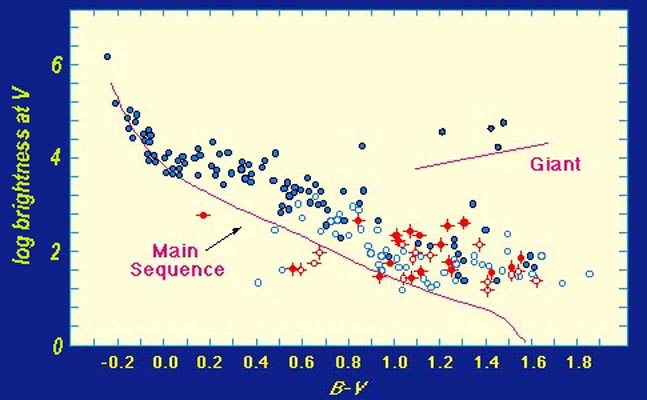 |
Very young clusters of stars have all or most
of their members above the main sequence, since they are still contracting and have
not reached stability with all power derived from thermonuclear fusion. Eventually they
settle on the main sequence. (From U. Tenn, http://csep10.phys.utk.edu/astr162/lect/birth/proto.html)
|
 |
Why is there a main sequence?If there were no thermonuclear fusion of hydrogen into helium, a star would continue to shrink under gravitational attraction as it released energy. There would be no stable period in the life of the star, and if we looked at stars over a range of ages and masses we would expect them to be scattered all over the H-R Diagram. Thermonuclear fusion heats the inside of the star, creating pressure that stops the collapse and producing a long period of great stability under hydrostatic equilibrium that defines the main sequence. (From B. Kellet, http://ast.star.rl.ac.uk/hr.html) |
A mass less than 0.08 times the mass of the sun never develops enough pressure and a high enough temperature for hydrogen fusion, so it slowly radiates its trapped gravitational energy away and disappears. These low mass objects are brown dwarfs.
The most massive stars, 60-80 times as massive as the sun, lie on the main sequence at the very high luminosity and high temperature tip. The great outpouring of photons from stars more massive than about 100 times the sun tears them apart, so they never manage to become stable.
Why is the main sequence so well defined![]()
Evolution Off the Main Sequence
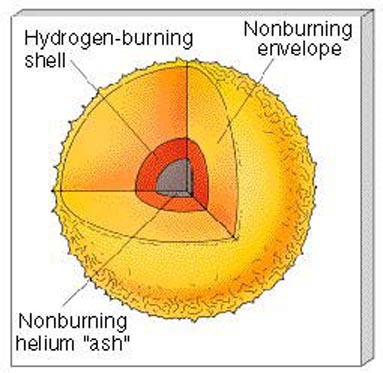 |
What happens when the hydrogen fuel
in the core begins to run out? (From
Chaisson & McMillan, Astronomy Today)
|
| These stars are found in other parts of the H-R diagram: | |
 |
Stars that have exhausted their core supply of hydrogen swell up and become very luminous. They are called red supergiants and giants, and their large size, relatively cool temperatures, and high luminosities mean they are plotted on the HR diagram above and to the right of the main sequence. Fundamentally, they do not lie on the main sequence because they are no longer powered by core burning of hydrogen. |
4He + 4He ---> 8Be + photon
8Be + 4He ---> 12C + photon
 |
That is, these stars start to burn helium as well as hydrogen and build up the combustion product carbon in their cores. Here is a sketch of the interior structure of the star at this stage. (From Chaisson & McMillan, Astronomy Today) |
These reactions produce a large burst of energy when they start -- the He in a star's core may "burn" in just a few minutes (or even seconds). This is called the helium flash. The energy released takes thousands of years to diffuse outwards and leave the star.
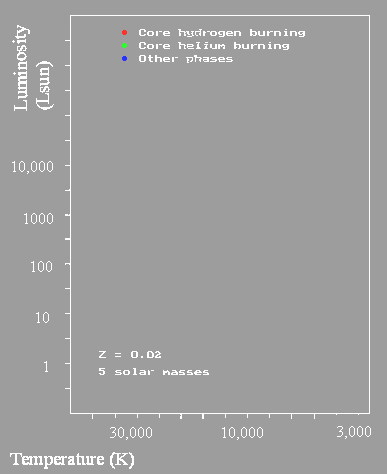 |
Here is an example of this evolution for a star five times the mass
of the sun. |
Evolution of Very Massive Stars
If the star has enough mass, the core will
contract, heat up, and trigger further reactions after the helium in the core has all been
converted to carbon. A star must have a mass greater than 8 M![]() for the following reactions to take place
for the following reactions to take place ![]()
12C + 4He ---> 16O
12C + 16O ---> 28Si
16O + 16O ---> 28Si + 4He
28Si + 28Si ---> 56Fe
 |
This sketch shows the structure of the star when it is accumulating an iron core, as in the last of the reactions listed above. (From Chaisson & McMillan, Astronomy Today) |
The star resembles an onion -- the core might be converting Si to Fe with each step outward yielding a layer burning another set of elements.
Because Fe (iron) is the most stable atomic nucleus, reactions cease when 56Fe is formed.
Mass Luminosity Relation
By compiling data on many pairs of stars, we know that the luminosity of a star on the main sequence increases rapidly with mass: larger masses imply higher luminosities because higher mass stars have higher central temperatures and hence convert H to He faster.
A star's lifetime on the main sequence is also related to its mass ![]()
High mass stars burn H rapidly.
Therefore, they have short main sequence lifetimes.
Low mass stars burn H slowly.
Therefore, they have long main sequence lifetimes
Higher mass stars have higher surface temperatures that are a
reflection of their higher internal temperatures -- the more massive the star, the larger
the gravitational pressure at the center and the higher the central temperature and
pressure. Nuclear reactions proceed more rapidly if the temperature is higher so massive
stars burn their nuclear fuel more quickly and evolve more quickly.![]()
The sun will go through the same evolution as other stars, and in about 5 billion more years will have become a red giant:
Below is an artist's conception of how the stages might look from the same vantage point on Earth (from Cosmos by C. Sagan, paintings by A. Schaller).
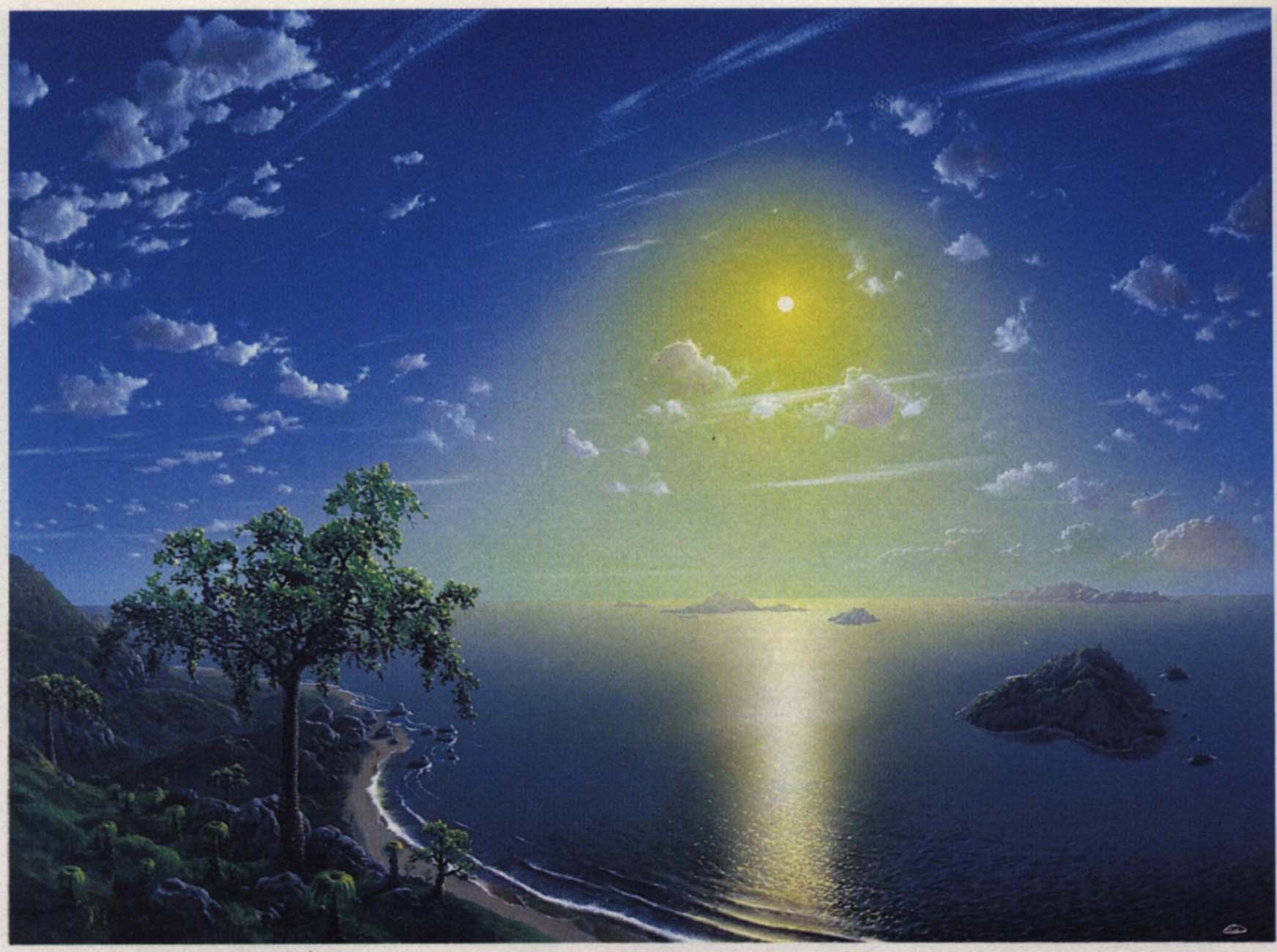 |
"The last perfect day", several billion years in the future. |
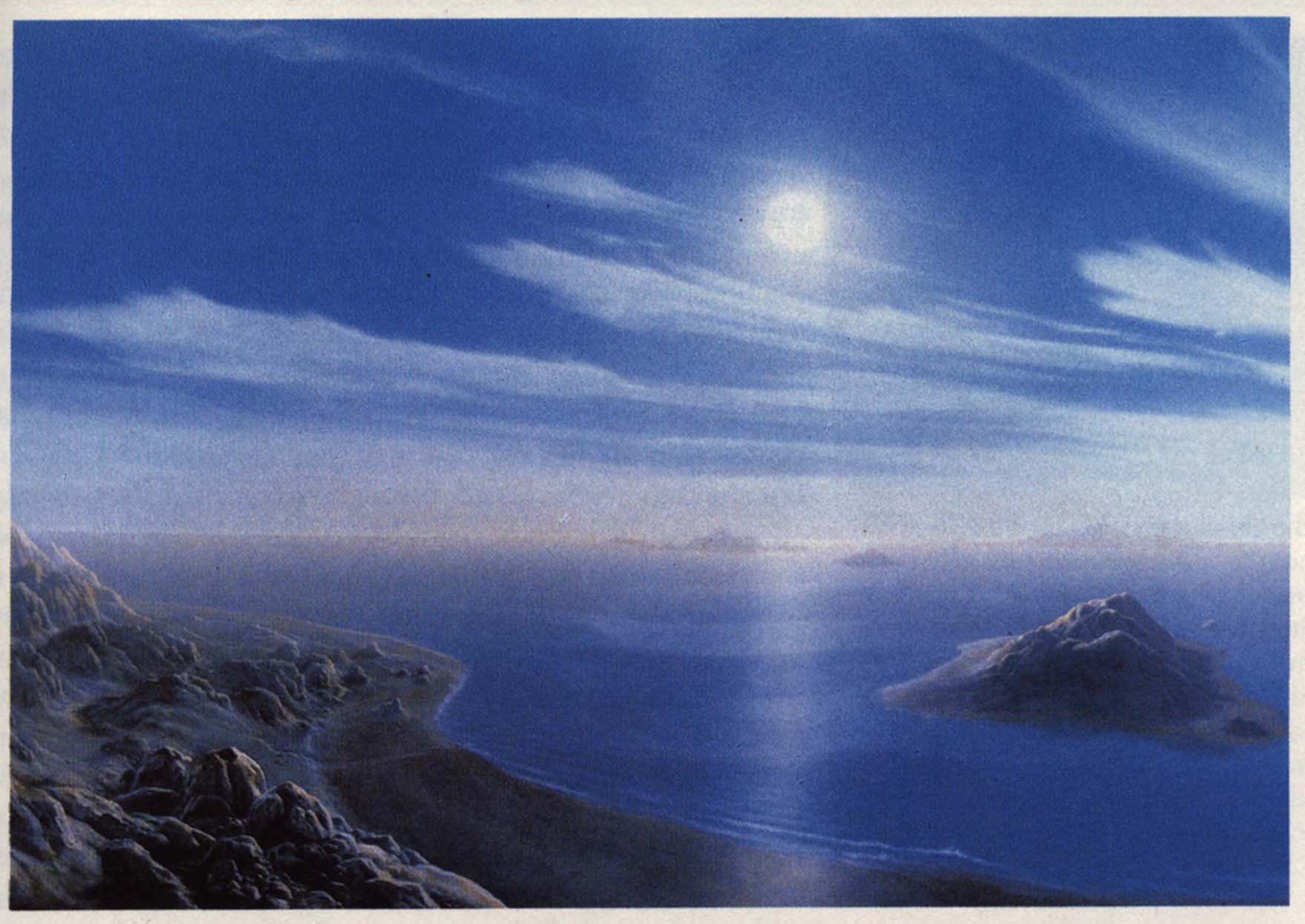 |
The waters recede and most life is extinguished as the sun starts to swell and its luminosity rises. |
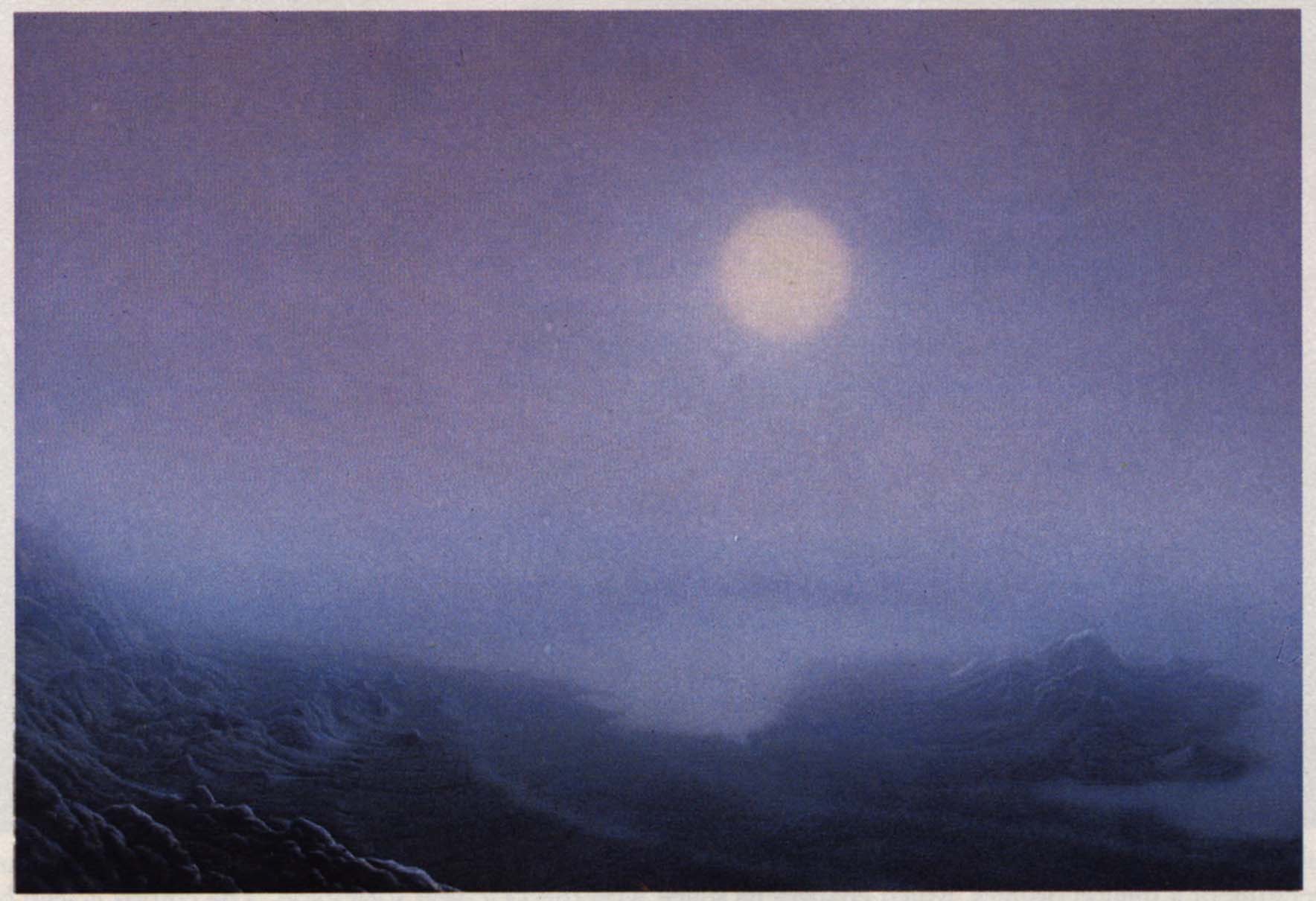 |
The oceans have evaporated and the atmosphere has escaped into space |
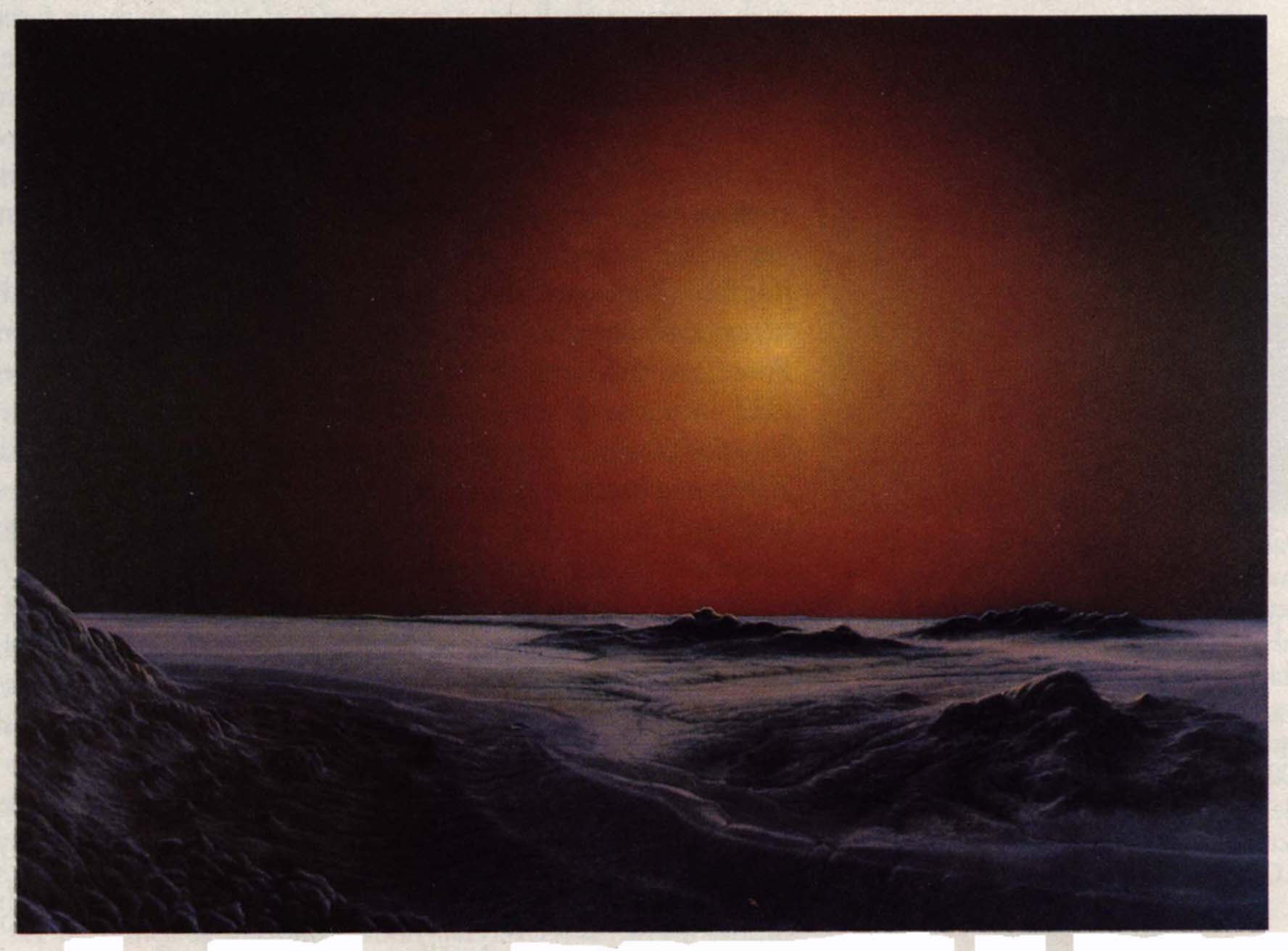 |
The sun, now a red giant, fills the sky over a dead planet. As we see in the next section, the red giant will eventually throw off its outer layers and become a white dwarf. |
Test your understanding before going on![]()